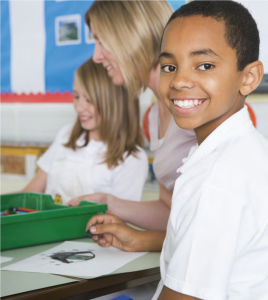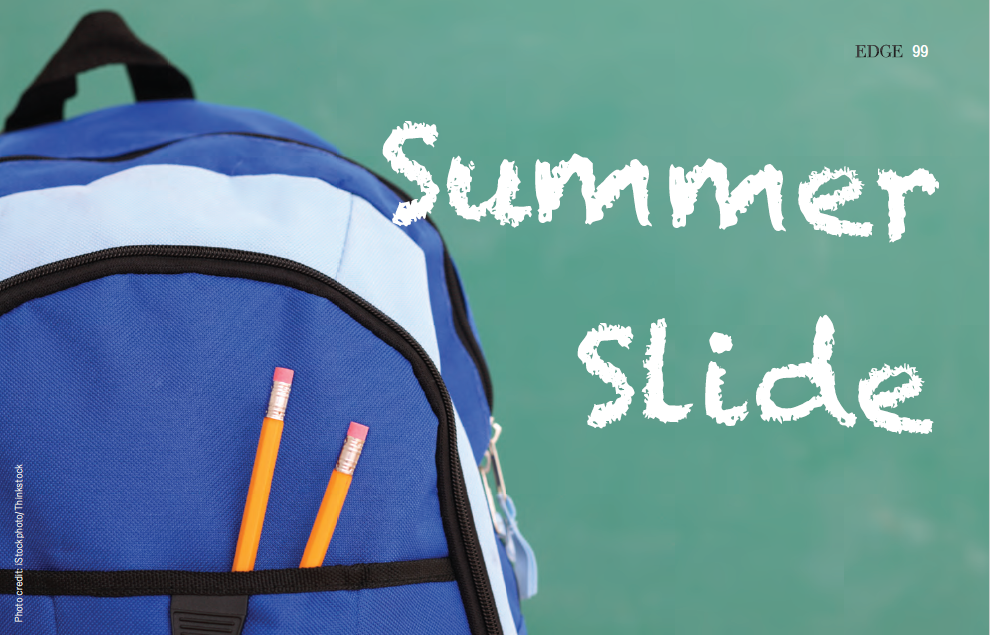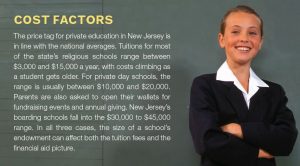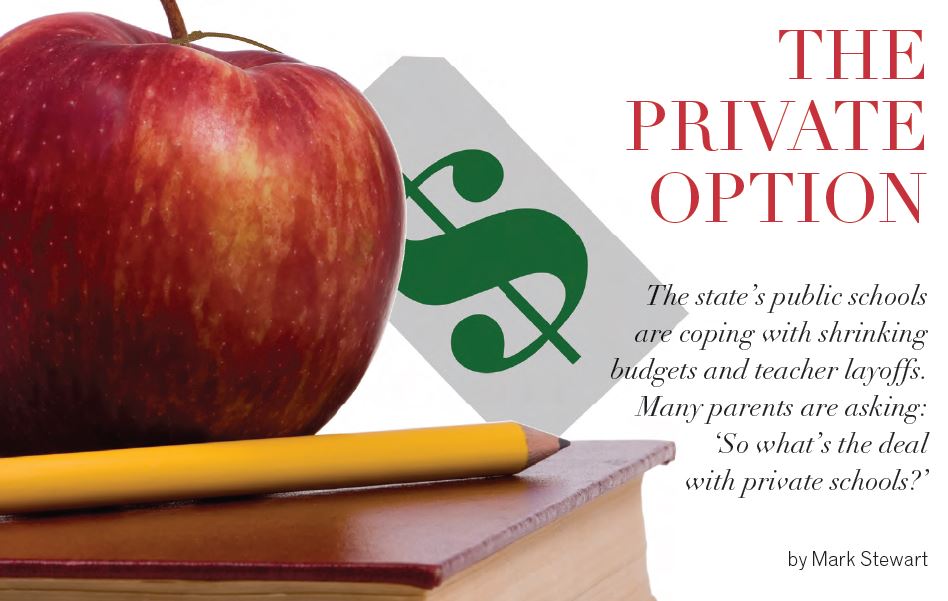Students begin each new school term with a review period. Should parents have one, too?
Studies show that children typically forget 20% of what they learn from the end of one school year to the start of the next. If only their parents retained knowledge that well! Indeed, at the start of each new school year, many grown-ups show the effects of “summer slide” more than their kids do. They forget the ironclad rules of student-parenting and, in some cases, overlook the fact that their offspring are becoming more capable and mature with each passing school year. Parental participation in a child’s education is encouraged and welcome. Different schools handle this in different ways, of course, but what they all have in  common is a bumpy back-to-school period where teachers, administrators, moms and dads can struggle to regain their bearings. Unfortunately, there’s no review period for parents. “Communication is always critical to a successful school opening,” says Nancy Leaderman,
common is a bumpy back-to-school period where teachers, administrators, moms and dads can struggle to regain their bearings. Unfortunately, there’s no review period for parents. “Communication is always critical to a successful school opening,” says Nancy Leaderman,
Upper School Principal at the Golda Och Academy, in West Orange. “The transition from the relaxed days of summer into a more structured daily experience can be challenging.” How does that challenge manifest itself? Occasionally, says Nat Conard, Headmaster at The Pingry School’s Martinsville campus, it often comes in the form of parents who have good intentions but unreal expectations. “Families at our school are very committed to getting their children the best possible education,” he explains. “The parents want the best for their kids.” Teachers across the state echo this sentiment. In fact, it’s important to note that many educators are parents themselves. They understand better than anyone the delicate balance required to provide a nurturing, healthy school environment—and to let kids find their own way. “We want students to be active participants in their education,” says Christine McCoid, Assistant Principal at Union Catholic Regional High School in Scotch Plains. Problems tend to crop up when parents overstep established boundaries. According to Monsignor Kevin Hanbury, Superintendent of Schools for the Archdiocese of Newark, that is sometimes the case when a school needs to discipline a student. “Parents have to be honest,” he says. “They have to acknowledge that their kids aren’t angels.” Msgr. Hanbury believes this mindset is part of the “cult of self-esteem that is ruining our children.” He feels that parents have to set realistic goals for their kids. “You don’t have to dumb everything down,” he says. “That doesn’t prepare kids for the challenges of real life.” He gets no argument from Peggy Campbell Rush, Lower School Director for the Gil St. Bernard’s school in Gladstone. “Some parents try to live vicariously through their kids,” she says. “You might be able to get away with that in elementary school, but ultimately it’s a teacher’s job to help children learn to be independent and morally and socially responsible.”
Of course, that’s easier said than done. Every school has a different code of conduct, and every teacher has a different style of educating students. But all agree on at least one thing: creating open and free lines of communication with parents is essential. Indeed, at schools statewide, there is a premium placed on including parents in the learning experience. A good example is Oratory Preparatory School in Summit. “Parents are encouraged to be a part of their child’s education process,” says Susan Dougherty, the school’s Public Relations Coordinator. “We don’t hold hands, but we do give parents and teens the tools they need to chisel out their own pathway on the road to higher education.” One way that Oratory does this is by posting all homework assignments online—standard practice for an increasing number of New Jersey schools. Scores on tests and quizzes are displayed periodically, as well. “Parents know exactly how their child did on a given day with a specific test,” says Dougherty. Offering online access to a student’s day-to-day activities has also become more prevalent. But it does have potential drawbacks. For some parents, monitoring their child’s performance can turn into an obsession.
The tech age has also led to problems with cell-phone use in schools. Texting is probably the most disruptive factor of all. According to McCoid, parents are often as guilty of this as their kids. “We have strict regulations for our students about cell phones,” she says. “They can’t be seen or heard during the day. Unfortunately, we have no way of enforcing this rule with parents. We’re trying to educate them that, although they have the ability to communicate directly with their kids, it’s not always appropriate.” According to Gloria Kron, Lower School Principal at Golda Och, that’s where schools have to  work extra-hard to establish ground rules. “With parents who are ‘overly involved,’ we use our best judgment about whether the classroom teacher, school guidance counselor or administrator should communicate appropriate and helpful boundaries in order to highlight increased success for student development,” she says. Conard embraces a similar approach with the families at Pingry. “Sometimes, you need to be quite direct before the school year starts,” he says. “It all comes back to shared recognition of the partnership between parents and the school.” One of the problems that Leaderman has dealt with at Golda Och are moms and dads who insist on a specific teacher for a student. “Parents often need to be reassured that we have appropriately placed their children in the correct levels, with the appropriate teachers and friends,” she says. Campbell Rush has had similar experiences, noting that a good deal of thought goes into class placement. “I don’t mind if parents come to us with valid concerns,” she says, “but they have to realize that we work very hard to achieve classroom balance.” One of the classic summer slide no-no’s is bypassing the chain of command. That could mean ignoring security stops or the administrative office when entering a school. Or it might be going over a teacher’s head and seeking an audience with a principal or administrator for what is strictly a classroom issue. As any educator will tell you, this type of behavior ultimately impedes the educational process.
work extra-hard to establish ground rules. “With parents who are ‘overly involved,’ we use our best judgment about whether the classroom teacher, school guidance counselor or administrator should communicate appropriate and helpful boundaries in order to highlight increased success for student development,” she says. Conard embraces a similar approach with the families at Pingry. “Sometimes, you need to be quite direct before the school year starts,” he says. “It all comes back to shared recognition of the partnership between parents and the school.” One of the problems that Leaderman has dealt with at Golda Och are moms and dads who insist on a specific teacher for a student. “Parents often need to be reassured that we have appropriately placed their children in the correct levels, with the appropriate teachers and friends,” she says. Campbell Rush has had similar experiences, noting that a good deal of thought goes into class placement. “I don’t mind if parents come to us with valid concerns,” she says, “but they have to realize that we work very hard to achieve classroom balance.” One of the classic summer slide no-no’s is bypassing the chain of command. That could mean ignoring security stops or the administrative office when entering a school. Or it might be going over a teacher’s head and seeking an audience with a principal or administrator for what is strictly a classroom issue. As any educator will tell you, this type of behavior ultimately impedes the educational process.
It can undermine a teacher’s authority and create an adversarial relationship between the parent and the school. It can also be a burden on the child. “Students study and achieve best when they are respected, challenged, encouraged and supported in a nurturing environment,” says Sister Regina Martin, Principal at Mother Seton Regional High School in Clark. “At home and in school.” Educators emphasize this point again and again. If they don’t have the support and cooperation of parents, their jobs become all the more difficult and the children are the ones who lose. “We’re in the business of joyful learning,” says Campbell Rush. “It’s okay for parents to ask questions, but there has to be a level of trust.”


 our child into a name-brand college. In doing so, however, we are committing a heresy of emphasis; we have become so obsessed with the outcome that we have overlooked the whole point of the process. As a Certified Educational Planner with many years in the trenches of the “admissions game” (as one colleague playfully refers to it), I have accumulated an abundance of two things: anecdotes and raw data. The data speaks for itself; in the end, numbers are numbers. But the anecdotes—the “data” lived out through the hearts, hands, and hormones of respiring teenaged beings—is why I cannot imagine doing anything else with my life. It is this passion that is incendiary with my students; it is the invisible permission slip for each of them to permit themselves to dream of a life and future that is so meaningful, so gratifying, so spectacularly promising, that they cannot help but begin to vision what it might be. Which is why nothing makes me cringe like hearing a parent say, “WE want to apply to…” My philosophy is this: Focus on the student’s process of growth and self-discovery in the college application process, and the ideal college match will be the beautiful consequence. Your child’s “reach” school may not even be on your radar when you begin. Thus your first and most important effort should be to identify the best possible destination—not just for those four wonderful years, but for the rest of his or her life. I may be uttering heresy to those Type A’s among us (myself included) who cleave to the Machiavellian means-to-an-end mentality of Why do anything if it doesn’t get you to the next level in life? But the experts back me up. Steve Antonoff, of Antonoff and Associates in Denver, Colorado, says this about people in my profession: “The treasure the consultant has is not the list, the treasure lies in figuring out who a young person is and helping them discover what colleges will be the best fit for them.” What Antonoff is gesturing at is that a great consultant—or a great guidance counselor, or a wise mentor—will do whatever it takes to: 1) cut through the teen peer-pressure culture that oppressively enforces conformity, 2) focus on students for who they are, and 3) mirror back to them the unique gifts with which they have been blessed. In my own practice, I encourage each young person not to put his or her light under a basket, but to hold it aloft so as to illuminate the room, the school, the community and, I daresay, the globe. Only then does a true picture begin to emerge of the “best possible college.” Only then can a young person start building an application strategy to get into that school. In that spirit, consider the experiences and outcomes of the following four students…
our child into a name-brand college. In doing so, however, we are committing a heresy of emphasis; we have become so obsessed with the outcome that we have overlooked the whole point of the process. As a Certified Educational Planner with many years in the trenches of the “admissions game” (as one colleague playfully refers to it), I have accumulated an abundance of two things: anecdotes and raw data. The data speaks for itself; in the end, numbers are numbers. But the anecdotes—the “data” lived out through the hearts, hands, and hormones of respiring teenaged beings—is why I cannot imagine doing anything else with my life. It is this passion that is incendiary with my students; it is the invisible permission slip for each of them to permit themselves to dream of a life and future that is so meaningful, so gratifying, so spectacularly promising, that they cannot help but begin to vision what it might be. Which is why nothing makes me cringe like hearing a parent say, “WE want to apply to…” My philosophy is this: Focus on the student’s process of growth and self-discovery in the college application process, and the ideal college match will be the beautiful consequence. Your child’s “reach” school may not even be on your radar when you begin. Thus your first and most important effort should be to identify the best possible destination—not just for those four wonderful years, but for the rest of his or her life. I may be uttering heresy to those Type A’s among us (myself included) who cleave to the Machiavellian means-to-an-end mentality of Why do anything if it doesn’t get you to the next level in life? But the experts back me up. Steve Antonoff, of Antonoff and Associates in Denver, Colorado, says this about people in my profession: “The treasure the consultant has is not the list, the treasure lies in figuring out who a young person is and helping them discover what colleges will be the best fit for them.” What Antonoff is gesturing at is that a great consultant—or a great guidance counselor, or a wise mentor—will do whatever it takes to: 1) cut through the teen peer-pressure culture that oppressively enforces conformity, 2) focus on students for who they are, and 3) mirror back to them the unique gifts with which they have been blessed. In my own practice, I encourage each young person not to put his or her light under a basket, but to hold it aloft so as to illuminate the room, the school, the community and, I daresay, the globe. Only then does a true picture begin to emerge of the “best possible college.” Only then can a young person start building an application strategy to get into that school. In that spirit, consider the experiences and outcomes of the following four students…




 devices and e-readers (by this time next year there may be close to 100 out there!) seemed tailor-made for the technological needs and aspirations of schools at every level. Teachers, students and educational researchers all nod in agreement that we have come to at an important place in the evolution of learning. Things seem to be changing at light speed. The same pulse-quickening technology that drives lunchroom chatter is finding its way into classrooms all over the state in the form of SMART Boards, iPads and other devices that connect kids to information in attention grabbing ways. It’s an exciting time to be a student. For teachers, it’s a time of transition. They must evolve with the technology. Fortunately, the traditional forms of delivering information, despite losing ground, are not leaving the scene.
devices and e-readers (by this time next year there may be close to 100 out there!) seemed tailor-made for the technological needs and aspirations of schools at every level. Teachers, students and educational researchers all nod in agreement that we have come to at an important place in the evolution of learning. Things seem to be changing at light speed. The same pulse-quickening technology that drives lunchroom chatter is finding its way into classrooms all over the state in the form of SMART Boards, iPads and other devices that connect kids to information in attention grabbing ways. It’s an exciting time to be a student. For teachers, it’s a time of transition. They must evolve with the technology. Fortunately, the traditional forms of delivering information, despite losing ground, are not leaving the scene. Educational Advancement at Far Hills Country Day School, predicts that, 10 years from now, no one will be questioning the role of technology in schools. Everyone will have it and everyone will use it. “No longer will we be asking, ‘Should we use technology in this lesson?’ Technology will be portable and accessible all the time, everywhere—and a given tool for all learning.” When Donna Toryak of Mount Saint Mary Academy looks into her crystal ball, she predicts that paper, pencils and textbooks will be passé, and will no longer be a staple of the traditional classroom. “Online and virtual classrooms may replace what we now see as students sitting in rows at desks, listening to a lecture or annotating the day’s lessons. Technology is a very thrilling theme for the future.” The future has arrived at a growing number of New Jersey schools, and in some cases it’s in the hands of four-year olds. The Rumson Country Day School built a Passport to Adventure afternoon enrichment program around 10 recently purchased iPads. “Our pre-school iPad program enables students to learn through interaction with technology,” explains Laura Small, a teacher and administrator at RCDS. “They practice and master letter recognition, handwriting and math concepts technologically as well as traditionally.
Educational Advancement at Far Hills Country Day School, predicts that, 10 years from now, no one will be questioning the role of technology in schools. Everyone will have it and everyone will use it. “No longer will we be asking, ‘Should we use technology in this lesson?’ Technology will be portable and accessible all the time, everywhere—and a given tool for all learning.” When Donna Toryak of Mount Saint Mary Academy looks into her crystal ball, she predicts that paper, pencils and textbooks will be passé, and will no longer be a staple of the traditional classroom. “Online and virtual classrooms may replace what we now see as students sitting in rows at desks, listening to a lecture or annotating the day’s lessons. Technology is a very thrilling theme for the future.” The future has arrived at a growing number of New Jersey schools, and in some cases it’s in the hands of four-year olds. The Rumson Country Day School built a Passport to Adventure afternoon enrichment program around 10 recently purchased iPads. “Our pre-school iPad program enables students to learn through interaction with technology,” explains Laura Small, a teacher and administrator at RCDS. “They practice and master letter recognition, handwriting and math concepts technologically as well as traditionally.


